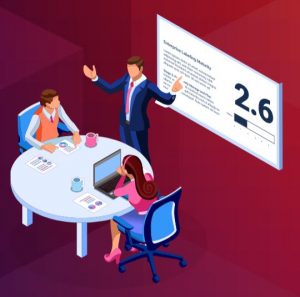Today’s forward-thinking companies understand that labeling is a strategic enabler for business and supply chain operations. With the advent of COVID-19, the need to review and understand the impact of labeling is becoming even more prevalent. It’s now essential to assess labeling capabilities and create a roadmap for improvement, so that businesses may remain competitive and respond to new and changing conditions. Businesses are looking for ways to address evolving labeling requirements and scale their labeling across a global landscape. Most importantly, they are looking for ways to control costs, maximize productivity, enable growth and ensure they run as efficiently as possible. It has become clear that labeling is exactly the area where companies can make a measurable difference and ensure return on investment as they chart a course for labeling improvement.
Addressing Cost Control
Cost cutting and operational savings have become even more important business strategies as companies look to survive the current economic climate brought on by the Coronavirus. Spending is scrutinized more than ever at the same time organizations are challenged to remain competitive and respond to new and changing conditions just to keep afloat. This makes prioritizing return on investment and ensuring that organizations run as efficiently as possible critical. Labeling is one important places where companies can make strides towards improving the bottom-line especially as it threads throughout a company’s global operations and supply chain. With Enterprise Labeling and Artwork Management, businesses can avoid delays and downtime, eliminate redundancies, reduce fines and waste and create a clear path to growth and improvement for business processes. Additional cost savings come from reduced template management and administration, while shared content reduces labor overhead on reviews/ approvals.
Providing Insight for Measurable Improvement

Labeling and packaging artwork have a direct impact on production, supply chain investment and time to market. For that reason, it’s important to have visibility throughout your entire end-to-end product packaging and labeling processes. It’s critical to track, report and measure performance to identify any bottlenecks, issues and inefficiencies, which has led many companies to express the growing need for advanced analytics and reporting from their Enterprise Labeling and Artwork Management solutions. As a matter of fact, a majority of companies don’t currently have Business Intelligence (BI) for labeling, yet companies are interested in leveraging real-time analytics and reporting to help drive improvements with labeling solutions. These companies understand that when users have access to advanced analytics they gain visibility into constantly changing and vital information including labels, printers, label status, users and audit data. This drives improvements and enables new levels of efficiency with their labeling and artwork processes.
Creating a Framework for Labeling Success
A starting point for advancing labeling is to understand your capabilities and your potential areas for growth. Although, in the past, there hasn’t been a clear framework for assessing your labeling to gauge progress and establish a roadmap for improvement. What’s more, not all businesses have the same labeling demands and many do not progress at the same pace. However, all business do need to ensure that their labeling requirements are optimized for business and supply chain efficiency, as well as future growth. As a result, companies today are beginning to understand that it’s important to create a framework for labeling success. Organizations can succeed in creating fully optimized labeling as part of their supply chain strategy by advancing maturity in a range of critical areas with fundamental capabilities such as standardization, centralization, automation, integration, compliance and visibility & oversight. The first step in this journey is to understand your level of labeling maturity, and then, to chart a course for the highest level that makes sense for your business.
In Closing…
The market leaders of today understand that when they take an enterprise approach to their labeling process, they significantly cut bottom line costs. With an end-to-end solution that brings together Enterprise Labeling and packaging artwork companies gain a competitive edge derived from speedy and efficient time to market. Additionally, these businesses reap the benefits of introducing a new level of automation to their supply chain. With an emphasis on the labeling and artwork process, businesses achieve a much higher level of visibility in their operations. The list of benefits goes on. Overall, it’s important to have a clear vision on your company’s current labeling and artwork practices and understand the benefits associated with enhancing your solution.
